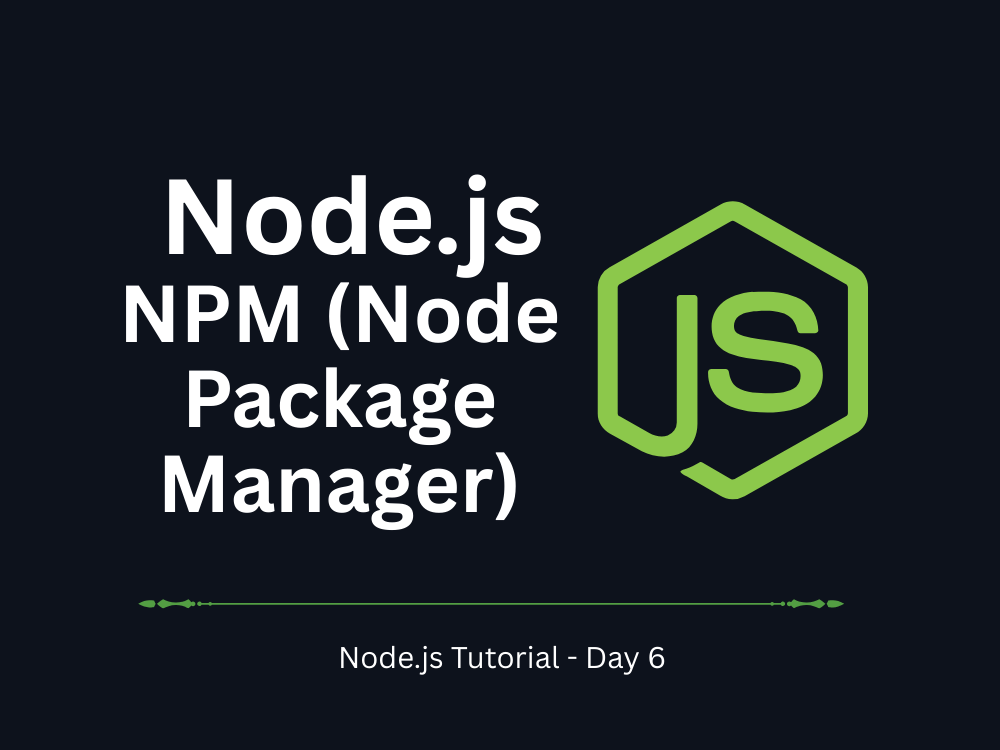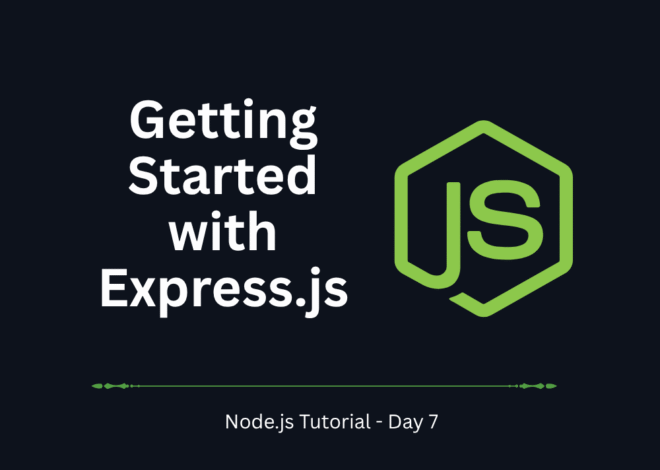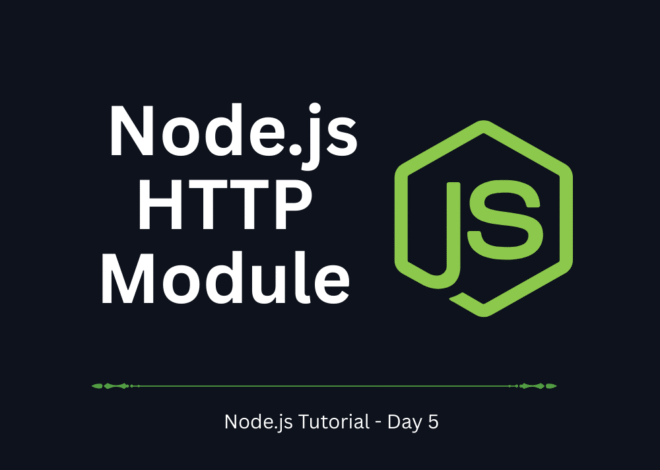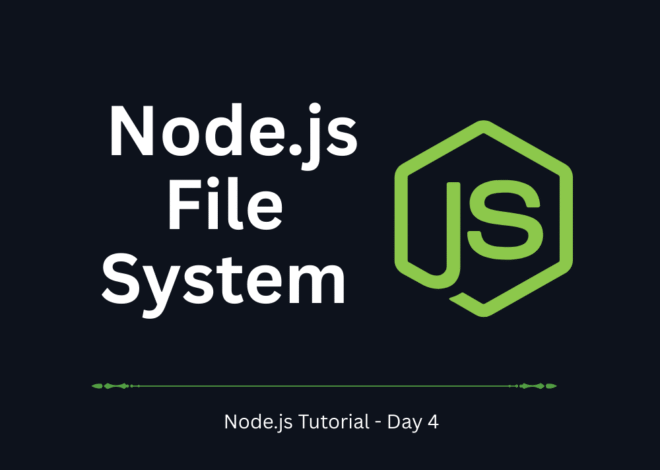
Node.js Tutorial – Day 6: NPM (Node Package Manager) and Package Management
Welcome back to our Node.js Tutorial series!
So far, we’ve covered:
- Day 1: Introduction to Node.js
- Day 2: Node.js Modules
- Day 3: Event Loop
- Day 4: File System Module
- Day 5: HTTP Module and Creating a Server
Today in Day 6, we’ll explore NPM (Node Package Manager), one of the most important tools in Node.js development.
What is NPM?
NPM is the default package manager for Node.js. It comes bundled with Node.js installation and allows developers to:
- Install libraries (packages/modules) from a global registry.
- Manage dependencies in projects.
- Run scripts for automation (build, test, start).
- Share custom packages with others.
👉 In short, NPM is like an app store for JavaScript packages.
Checking NPM Installation
If Node.js is installed, NPM comes with it. To check:
npm -vExample output:
10.5.0If you see a version number, NPM is installed successfully.
Initializing a New Project with NPM
To create a new Node.js project, we first initialize NPM.
mkdir my-app
cd my-app
npm init -yThis will generate a package.json file:
{
"name": "my-app",
"version": "1.0.0",
"main": "index.js",
"license": "MIT"
}The package.json file is the blueprint of your project, storing metadata and dependencies.
Installing Packages with NPM
1. Installing a Package (Local)
npm install lodashThis installs the lodash library inside node_modules/ and updates package.json.
2. Installing a Package Globally
npm install -g nodemonThis installs the package system-wide, accessible from anywhere.
3. Development Dependency
npm install jest --save-devAdds the package only for development (e.g., testing, linting).
Using Installed Packages
Example with Lodash:
const _ = require('lodash');
const numbers = [1, 2, 3, 4, 5];
console.log("Shuffled Numbers:", _.shuffle(numbers));Output:
Shuffled Numbers: [3, 5, 1, 4, 2]Updating and Removing Packages
- Update a package
npm update lodash- Uninstall a package
npm uninstall lodash- Check outdated packages
npm outdatedNPM Scripts
You can add custom scripts in package.json:
"scripts": {
"start": "node index.js",
"dev": "nodemon index.js",
"test": "jest"
}Now run:
npm run devThis makes development workflows faster.
Mini-Project: Weather App with NPM
Let’s create a small Weather App using an external package (axios) to fetch data.
Step 1: Initialize project
mkdir weather-app
cd weather-app
npm init -y
npm install axiosStep 2: Create app.js
const axios = require('axios');
async function getWeather(city) {
try {
const response = await axios.get(
`https://wttr.in/${city}?format=%t`
);
console.log(`The weather in ${city} is ${response.data}`);
} catch (error) {
console.error("Error fetching weather data:", error.message);
}
}
getWeather("Delhi");Step 3: Run the app
node app.jsOutput example:
The weather in Delhi is +32°C🎉 You’ve built a mini weather app using NPM and external packages!
NPM vs Yarn vs PNPM
While NPM is the default, there are alternatives like:
- Yarn → faster installs, better caching.
- PNPM → saves disk space by reusing packages across projects.
👉 But as a beginner, stick with NPM first since it comes by default.
Best Practices with NPM
- Always commit your
package.jsonandpackage-lock.jsonto version control. - Avoid committing the
node_modulesfolder. - Use
npm auditto check for security vulnerabilities. - Prefer exact versions in production to avoid unexpected issues.
Conclusion
In this lesson of our Node.js Tutorial, you learned:
- What NPM is and why it’s important
- Initializing a project with
npm init - Installing, updating, and removing packages
- Running NPM scripts
- Building a small Weather App using Axios
With NPM, you now have access to millions of packages that can speed up your development.
👉 Up Next: Day 7 – Node.js Global Objects


